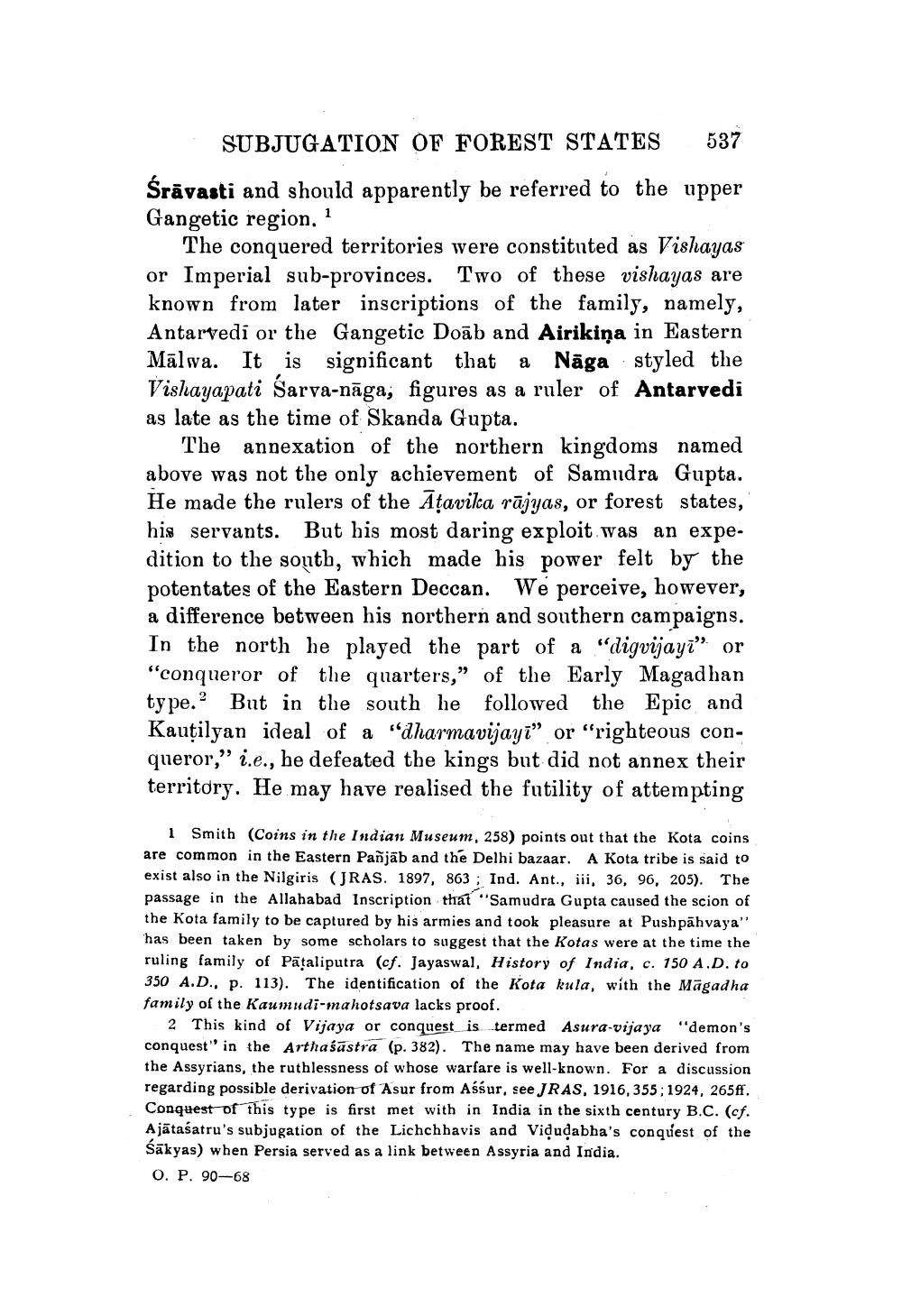________________
SUBJUGATION OF FOREST STATES
537
Śrāvasti and should apparently be referred to the upper Gangetic region. 1
The conquered territories were constituted as Vishayas or Imperial sub-provinces. Two of these vishayas are known from later inscriptions of the family, namely, Antarvedi or the Gangetic Doāb and Airikiņa in Eastern Mālwa. It is significant that a Nāga styled the Vishayapati Sarva-nāga; figures as a ruler of Antarvedi as late as the time of Skanda Gupta.
The annexation of the northern kingdoms named above was not the only achievement of Samudra Gupta. He made the rulers of the Āțavilca rājyas, or forest states, his servants. But his most daring exploit was an expedition to the south, which made his power felt by the potentates of the Eastern Deccan. We perceive, however, a difference between his northern and southern campaigns. In the north he played the part of a “digvijayī” or "conqueror of the quarters,” of the Early Magadhan type.” But in the south he followed the Epic and Kautilyan ideal of a "dharmavijayī" or "righteous conqueror," i.e., he defeated the kings but did not annex their territory. He may have realised the futility of attempting
1 Smith (Coins in the Indian Museum, 258) points out that the Kota coins are common in the Eastern Pañjāb and the Delhi bazaar. A Kota tribe is said to exist also in the Nilgiris (JRAS. 1897, 863; Ind. Ant., iii, 36, 96, 205). The passage in the Allahabad Inscription that "Samudra Gupta caused the scion of the Kota family to be captured by his armies and took pleasure at Pushpāhvaya" has been taken by some scholars to suggest that the Kotas were at the time the ruling family of Pataliputra (cf. Jayaswal, History of India, c. 150 A.D. to 350 A.D., p. 113). The identification of the Kota kula, with the Māgadha family of the Kaumudi-mahotsava lacks proof.
2 This kind of Vijaya or conquest is termed Asura-vijaya "demon's conquest" in the Arthaśāstra (p. 382). The name may have been derived from the Assyrians, the ruthlessness of whose warfare is well-known. For a discussion regarding possible derivation of Asur from Assur, see JRAS, 1916,355 ; 1924, 265ff. Conquest of this type is first met with in India in the sixth century B.C. (cf. Ajātaśatru's subjugation of the Lichchhavis and Vidudabha's conquest of the Sākyas) when Persia served as a link between Assyria and India. 0. P. 90-68




